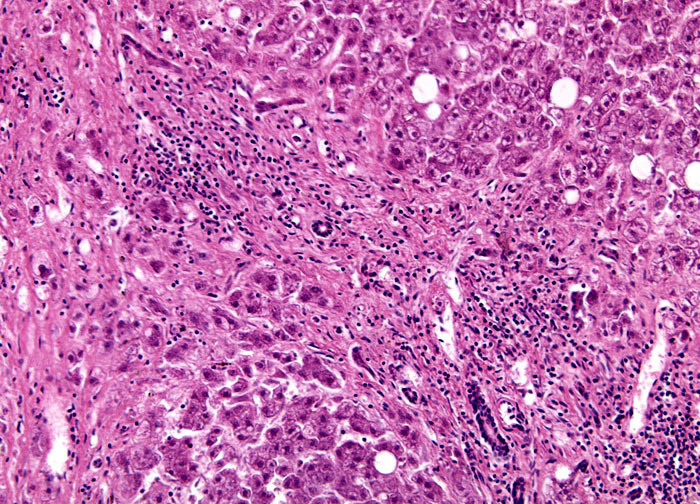
Hepatitis at 10x Magnification
In the United States, approximately 35,000 people become infected with hepatitis C each year, making it the most common blood-borne disease in the country. The primary treatment for hepatitis C is a combination therapy of alpha interferon and the drug ribavirin, though only about half of the patients that receive the treatment experience improvement in their condition. Also, a number of notable side effects, including fatigue, nausea, vomiting, headaches, muscle soreness, depression, irritability, mood swings, insomnia, hair loss, fever, and chest pain, among others, often occur with this form of treatment. However, the risk of death from hepatitis C is such a serious concern (approximately 8,000 to 10,000 Americans die from the disease annually) that most individuals are willing to incur the side effects of treatment. If therapy fails, there is little recourse for patients except for liver transplantation. No vaccine is currently available for hepatitis C, but individuals that are infected with the disease are usually advised to receive vaccinations for hepatitis A and B, since their symptoms may become even more severe if they are exposed to another form of the hepatitis virus.













